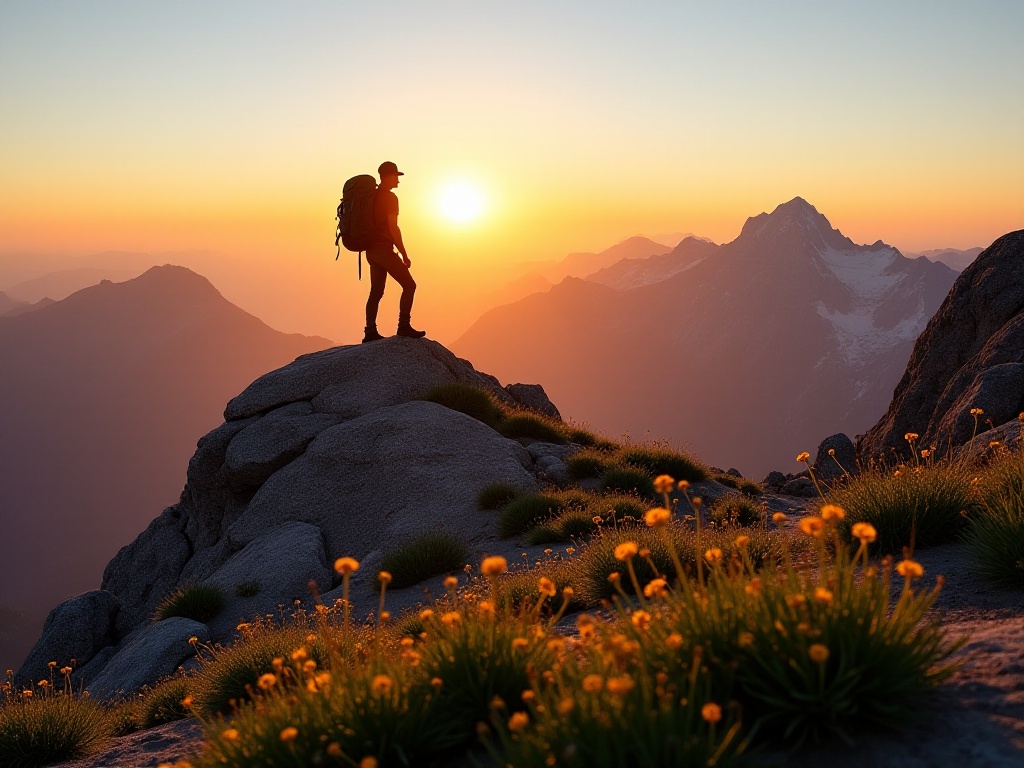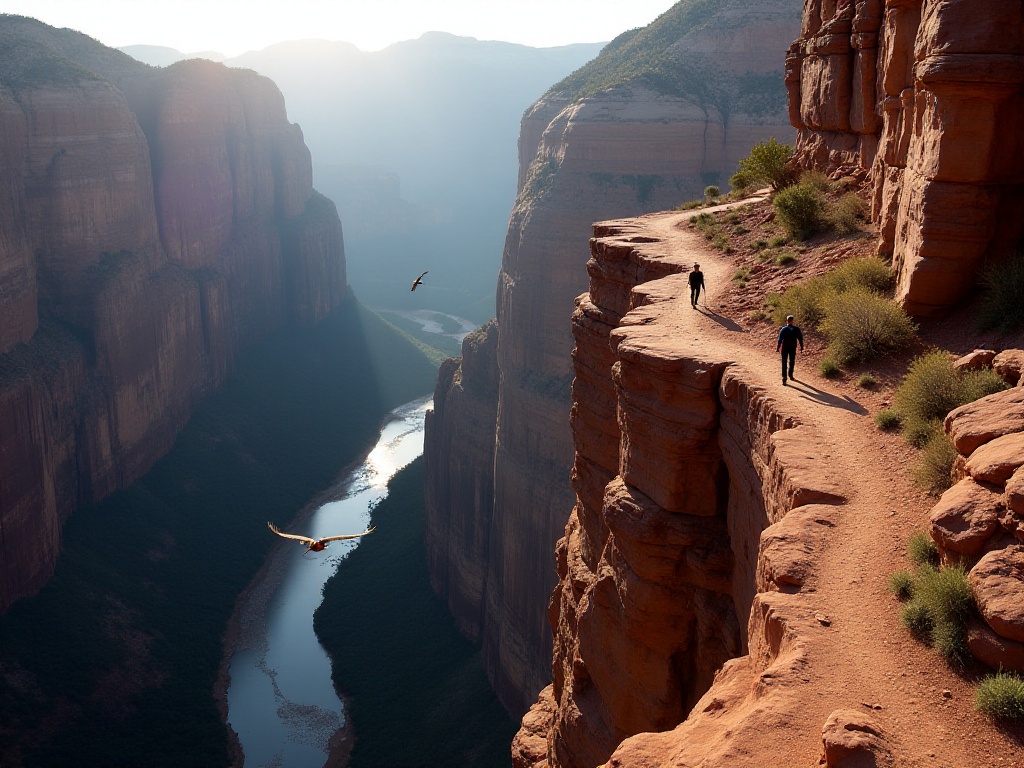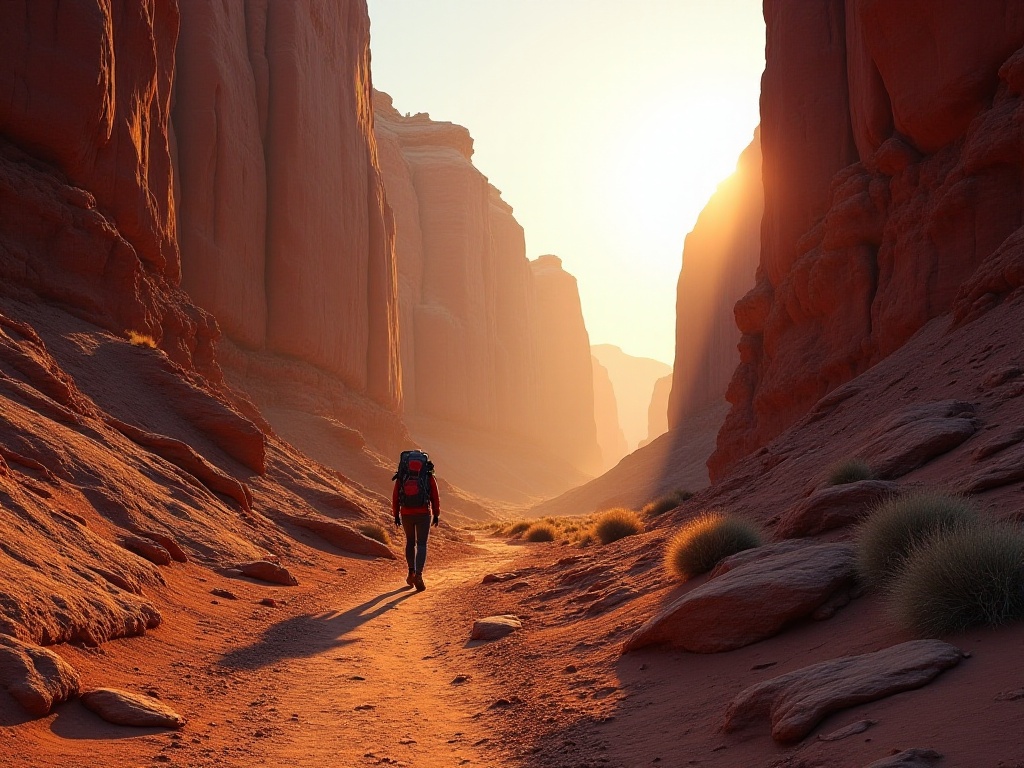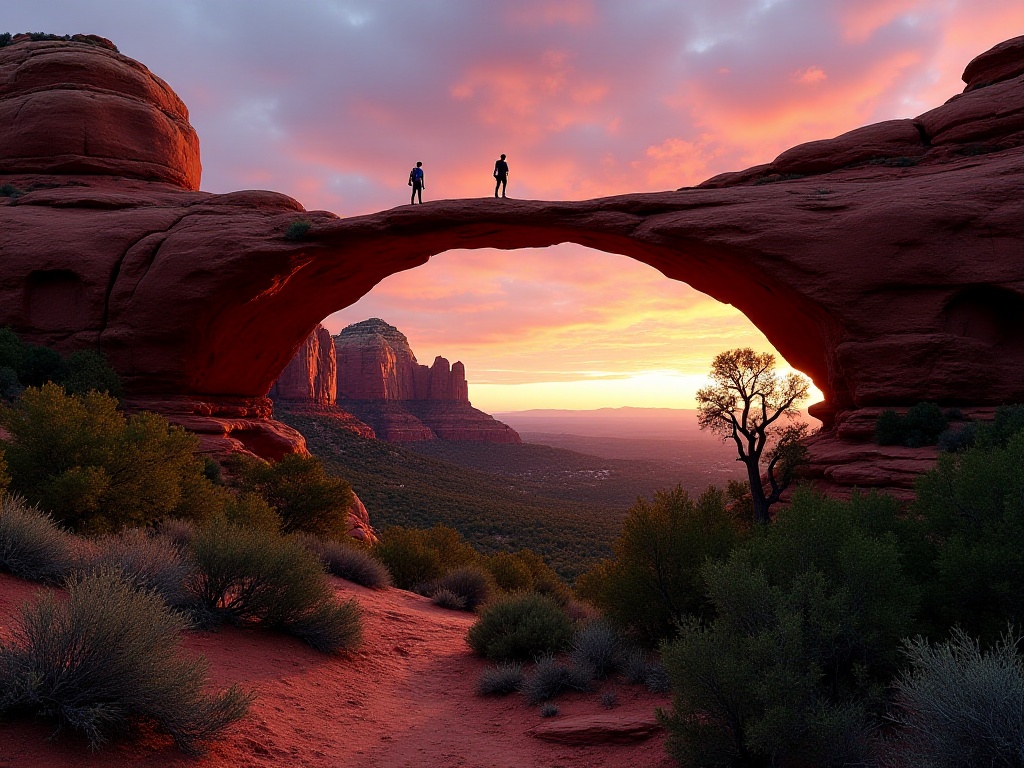Opening Thoughts
In America, hiking has become both a way of life and a cultural symbol. Each year, countless nature enthusiasts shoulder their packs and set out across this vast land. From Alaska's pristine wilderness to Florida's swamplands, from California's redwood forests to Maine's Appalachian Mountains, America's hiking trails unfold like an immense canvas, revealing nature's purest beauty.
As a frequent backpacker, I've hiked through Yosemite Valley, camped beneath the snow-capped peaks of Grand Teton National Park, and left footprints on the salt flats of Death Valley National Park. Each hike has deepened my understanding and love for this land. Today, let me share this passion as we explore America's most captivating hiking trails together.
West Coast Classics
The John Muir Trail is undoubtedly one of the most iconic hiking routes on America's West Coast. Named after the famous American naturalist John Muir, this trail cuts through California's Sierra Nevada mountains. Starting in Yosemite Valley and ending at Mount Whitney, it traverses three national parks: Yosemite, Kings Canyon, and Sequoia.
During this 211-mile journey, you'll pass dozens of alpine lakes, cross countless streams, and climb several peaks exceeding 10,000 feet in elevation. The best hiking season is from July to September, when the snow has melted, wildflowers are in bloom, and the weather is clear. I still vividly remember my first time hiking the John Muir Trail, seeing Indian Paintbrush and blue lupines carpeting the alpine meadows—an unforgettable sight.
Hikers typically need 2-3 weeks to complete the entire trail, and this time is absolutely worth it. You might encounter black-tailed deer foraging at sunrise, hear marmots whistling in the evening, or watch golden eagles soaring over canyons at dawn. These are natural wonders rarely seen in city life.
The Sierra High Route is a relatively secluded hiking trail. Unlike the John Muir Trail, this route runs mostly above the treeline with few obvious markers, requiring strong navigation skills. But it's precisely this primitive and wild nature that makes it a favorite among experienced hikers.
On the Sierra High Route, you'll cross more than 60 passes, many exceeding 12,000 feet in elevation. The route passes hundreds of alpine lakes, each like a mirror reflecting surrounding cliffs and white clouds. It's especially stunning at dusk when the setting sun's rays paint the lake surfaces, seeming to gild the entire world.

Southwest Wilderness
The Arizona Trail is an epic hiking route that crosses Arizona from north to south. Stretching from the Mexican border to the Utah state line, this trail offers the opportunity to experience dramatic landscape changes from desert to mountains.
In the south, you'll traverse the Sonoran Desert, home to iconic saguaro cacti, some reaching 50 feet tall. During spring, the desert becomes decorated with various wildflowers: golden poppies, desert bluebells, and Indian paintbrush, transforming the arid landscape into a colorful garden.
The middle section enters the Mogollon Rim, a highland region covered with pines and junipers. The terrain here is more moderate, but the elevation gradually increases, making the air thinner. Many hikers choose to adjust their pace here to acclimate to the altitude.
The northern section enters the Colorado Plateau, passing through Grand Canyon National Park. The scenery here is most spectacular: layered red cliff faces, the winding Colorado River, and snow-capped mountains in the distance form a stunning natural canvas.
The Hayduke Trail is another highly challenging route. Named after George Hayduke, a character in Edward Abbey's novel "The Monkey Wrench Gang," it perfectly embodies the wilderness spirit of the American Southwest.
This trail has no fixed markers, and many sections require navigation by map and compass. It traverses America's most spectacular canyon country, including the famous Grand Canyon, Bryce Canyon, and Zion National Park. Every section is challenging: sometimes you'll need to navigate narrow canyons, climb steep rock faces, or trek long distances without water sources.
But the rewards for these challenges are incomparable. You'll see some of Earth's most unique geological features: wind-carved arches, water-carved canyons, and colorful rock layers. Especially at sunrise and sunset, when sunlight strikes the red rocks at different angles, the entire landscape displays breathtaking color variations.

National Park Selections
The Navajo Loop and Queens Garden Trail in Bryce Canyon National Park is the best choice for experiencing Utah's red rock formations. This relatively short trail concentrates the most essential views of Bryce Canyon.
The trail begins at Sunrise Point, the best location for watching sunrise over Bryce Canyon. When the first rays of morning light hit the red rock hoodoos, the entire canyon seems to ignite, displaying a dreamlike orange-red glow. As the sun rises, the play of light and shadow causes the hoodoos' colors to constantly change, from deep red to orange-yellow to pink, making each moment unique.
The trail winds down along the canyon rim, offering opportunities to closely observe these peculiar rock formations. These formations, known as "hoodoos," were created by wind and rain erosion. Each pillar has its own unique shape—some resemble castles, others animals or human figures, sparking visitors' imagination.
At the trail's lowest point, you'll enter the canyon floor, surrounded by these towering hoodoos. The perspective here is completely different; looking up, the stone pillars appear even more massive and majestic. Especially on clear days, the contrast between blue sky, white clouds, and red rocks creates visually striking scenes.
Angels Landing in Zion National Park is a trail that inspires both anticipation and fear. The final section requires using both hands and feet, relying on fixed chains to climb nearly vertical cliff faces, deterring many visitors. But it's precisely this challenge that makes it one of Zion's most popular hiking trails.
The hike begins at the valley floor, winding up alongside the Virgin River. The first section is relatively gentle, but the trail becomes increasingly steep as elevation increases. After reaching Scout Lookout, the real challenge begins: the famous "chains section" lies ahead.
This section requires using both hands and feet, gripping chains fixed to the rock face while carefully advancing. Though it looks dangerous, it's actually very safe if you follow the guidelines. The greatest challenge might be psychological: on one side is a nearly vertical cliff, with a 1,500-foot drop below.
However, once you reach the summit, all tension and fatigue vanish. Standing on Angels Landing's viewpoint, the entire Zion Canyon spreads before you: the winding Virgin River like a silver ribbon through the canyon, red sandstone cliffs gleaming in the sunlight, distant mountains stretching endlessly. Such scenery makes all your efforts worthwhile.

Conclusion and Recommendations
When hiking in America, equipment and preparation are crucial. First, choose appropriate gear based on the trail's difficulty and duration. For day hikes, a comfortable backpack, waterproof hiking boots, and sufficient water and food are enough. But for multi-day hikes, you'll need to consider tents, sleeping bags, cooking equipment, and other camping gear.
Weather is another factor requiring special attention. American weather can be highly variable, especially in mountainous regions. Even in summer, temperature differences between morning and evening at high altitudes can exceed 20 degrees. Therefore, bringing warm clothing and rain gear is essential.
For physical preparation, it's recommended to start with simple trails and gradually increase difficulty. Yosemite's Vernal Falls Trail is an excellent beginner route. Though it has some elevation gain, the trail is well-maintained and scenic, especially in spring when the waterfall is at full volume.
Nevada Falls is a slightly more challenging option. This trail is about 5.4 miles round trip with approximately 600 feet of elevation gain. Though more strenuous, it offers views of one of Yosemite's most spectacular waterfalls, definitely worth the effort.
Mount Rainier's Wonderland Trail presents an even greater challenge. This 93-mile loop requires 7-10 days to complete, during which you'll see Mount Rainier's most beautiful aspects: vast wildflower meadows, sparkling glaciers, bubbling streams, and possibly wildlife.
Over the years, I've seen more and more young people becoming enthusiastic about hiking. They're not just seeking exercise and health, but also wanting to connect with nature and find inner peace. In this fast-paced era, hiking provides an opportunity to slow down and appreciate life.
Each hiking trail has its unique charm, just as each person has their own story. Some prefer challenging routes that test their limits; others enjoy a leisurely pace on scenic short trails. Whichever trail you choose, what matters is truly experiencing nature's wonder during your hike and creating your own memorable experiences.
So, are you ready? Let's embark together on this journey exploring America's hiking trails! Whether it's the challenging Angels Landing or the scenic John Muir Trail, they're all waiting for you to discover their beauty.







